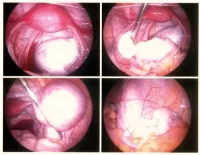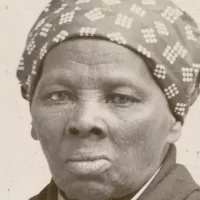Ectopic pregnancy, a serious complication where the embryo implants outside the uterus, often presents with abdominal pain and vaginal bleeding, although less than half of those affected experience both. Pain can vary in nature and may radiate to the shoulder if bleeding extends into the abdomen. Significant blood loss can lead to rapid heartbeat, fainting, or shock. Survival of the fetus in such cases is extremely rare.
1971: Discontinuation of DES in the US
In 1971, the United States discontinued the use of Diethylstilbestrol (DES) due to its association with an elevated risk of ectopic pregnancy in women exposed to it in utero.
July 1999: Lori Dalton Gives Birth to Saige
In July 1999, Lori Dalton gave birth to a healthy baby girl, Saige, in Ogden, Utah. What made this birth unique was that Saige had developed outside the uterus, a fact that had gone unnoticed in previous ultrasounds. Both mother and baby were in perfect health.
September 1999: Jane Ingram Gives Birth to Triplets, Including Extrauterine Fetus
In September 1999, Jane Ingram, a 32-year-old English woman, gave birth to triplets: Olivia and Mary in the womb and Ronan, an extrauterine fetus, located below the womb. All three babies survived.
2003: Ectopic Pregnancies and Maternal Death Rates in the UK (2003-2005)
Between 2003 and 2005, data from the UK showed 32,100 ectopic pregnancies with 10 resulting in maternal deaths, highlighting the risk associated with ectopic pregnancies despite advances in healthcare.
2005: Ectopic Pregnancies and Maternal Death Rates in the UK (2003-2005)
Between 2003 and 2005, data from the UK showed 32,100 ectopic pregnancies with 10 resulting in maternal deaths, highlighting the risk associated with ectopic pregnancies despite advances in healthcare.
2006: UK Confidential Enquiry into Maternal Deaths Report (2006-2008)
The UK Confidential Enquiry into Maternal Deaths reported in 2006-2008 that ectopic pregnancy was responsible for 6 maternal deaths, a rate of 0.26 per 100,000 pregnancies.
May 29, 2008: Meera Thangarajah Gives Birth to Durga
On May 29, 2008, Meera Thangarajah, a 34-year-old Australian woman, gave birth to a healthy baby girl, Durga, via Caesarean section. This birth was particularly noteworthy because Durga had developed from an ectopic pregnancy in her mother's ovary, a rare occurrence.
2008: UK Confidential Enquiry into Maternal Deaths Report (2006-2008)
The UK Confidential Enquiry into Maternal Deaths reported in 2006-2008 that ectopic pregnancy was responsible for 6 maternal deaths, a rate of 0.26 per 100,000 pregnancies.
2010: Review on Tubal Ectopic Pregnancy
A 2010 review suggested that tubal ectopic pregnancy is likely caused by a combination of factors: the embryo's retention within the fallopian tube due to impaired transport, and changes in the tube's environment that allow for early implantation.
2013: Randomized Study on Fertility After Ectopic Pregnancy
A 2013 randomized study investigated the impact of different treatments for ectopic pregnancy on future fertility. It found similar rates of intrauterine pregnancy after two years across radical surgery (64%), medication (67%), and conservative surgery (70%).
2015: European Society of Human Reproduction and Embryology (ESHRE) Annual Congress
In 2015, The results of a 30-year study on reproductive and pregnancy outcomes were presented at the annual congress of the European Society of Human Reproduction and Embryology (ESHRE). The study, involving over 14,000 women, found that those with endometriosis had a 76% higher risk of miscarriage and a 270% higher risk of ectopic pregnancy.
Mentioned in this timeline

Endometriosis is a condition where tissue similar to the uterine...

September is the ninth month of the year in the...
Trending
Stuart Scott was a prominent American sportscaster and anchor best known for his work on ESPN's SportsCenter He distinguished himself...
4 days ago Eagles' Jalen Carter sidelined week-to-week after undergoing procedures on both shoulders.

2 months ago Saquon Barkley Injury Update: Expected to Play Despite Soreness Against Eagles

DeVonta Smith is a professional American football wide receiver for the Philadelphia Eagles He achieved collegiate stardom at the University...

6 days ago De'Aaron Fox NBA fantasy picks, DFS, betting tips and player props.
Dana Loesch is an American radio and television host formerly a spokesperson for the NRA and a writer editor for...
Popular
Matt and Ross Duffer known as the Duffer Brothers are...
Aftyn Alyssa Behn is an American politician currently serving as...

Candace Owens is an American conservative political commentator and author...

Ilhan Omar is an American politician currently serving as the...

XXXTentacion born Jahseh Dwayne Ricardo Onfroy was a controversial yet...

Harriet Tubman was a pivotal American abolitionist and social activist...
